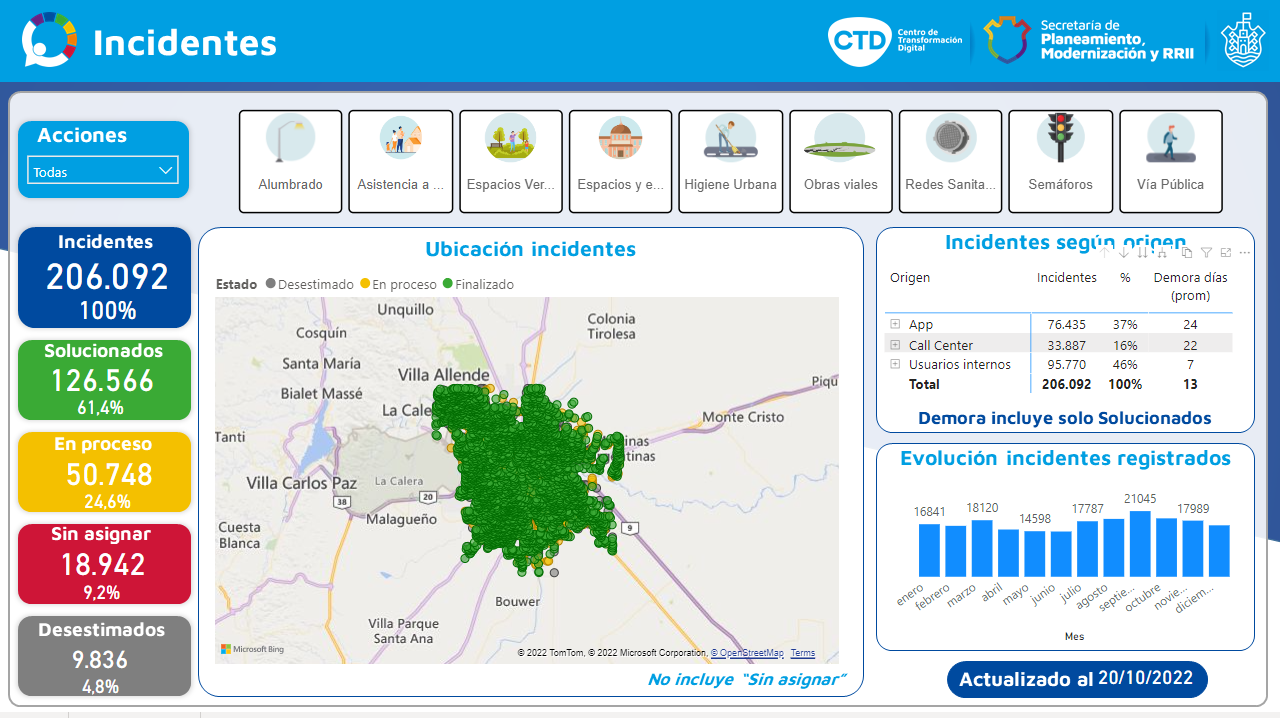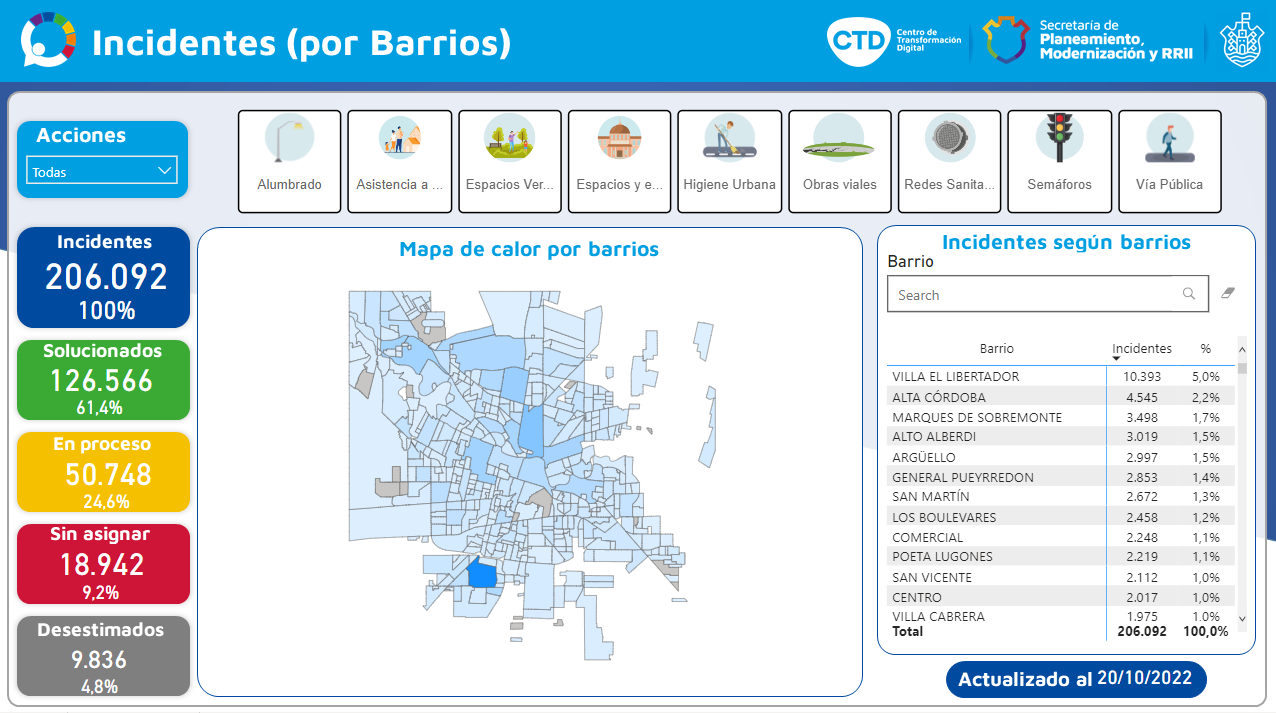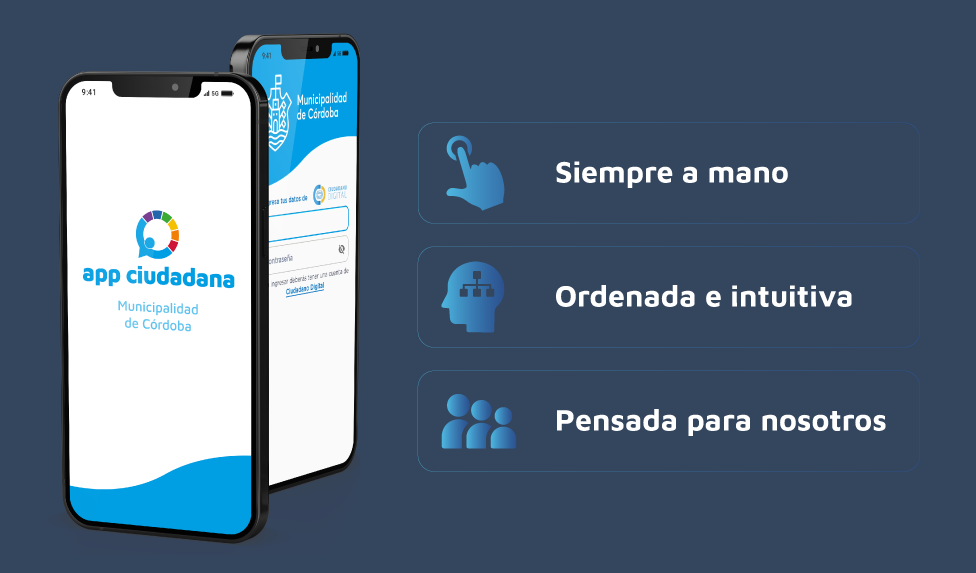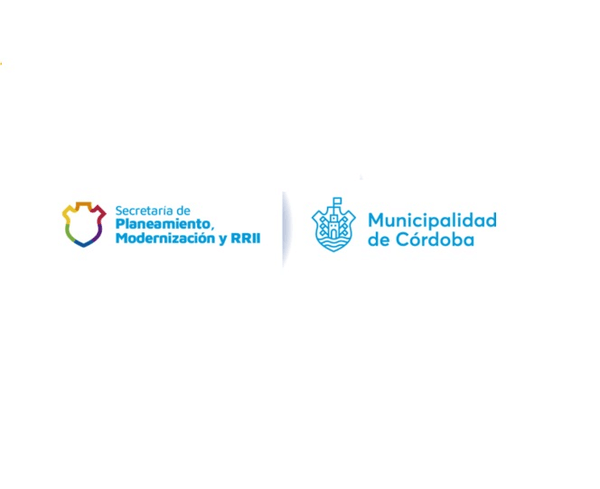Initially, the project identified the main complaints citizens regularly made to the municipal government, in order to incorporate them in the first version of App Ciudadana. The intention was to engage and involve the audience. This is why complaints that were regularly made were selected first, such as public lighting, potholes in asphalt and park maintenance.
Different municipal departments joined the system, each with its own process. Some of them quickly adopted the system while others had to make changes to their original processes. Different implementation strategies were undertaken. Joint work meetings, new workflows and commitment roadmaps were some of the tasks led by the implementation team. Constant dialogue was key for addressing any emerging issues.
To that end the Digital Transformation team collaborated with each area to create categories with sufficient information for the area to determine the type of work its solution would entail and simple enough for a citizen (with no technical background) to understand.
The App has a friendly user interface that includes a series of icons and questions which guide the citizen to select the correct category for the problem it has encountered. The same methodology was later carried out to include issues on problems with public trees, sewage overflow, traffic lights, garbage disposal and landfills.
Responsibility is key to ensure that every incident reported receives proper attention To that aim, clear administrative and operative teams were established. An administrative resolution was passed to institutionalize the App Ciudadana System as the system that centralizes claims and requests.
As to the development of Mobile Apps and Systems, agile management strategies was the favored methodology, making incremental changes in iterations of 2-week periods. Public-Private alliance was key to guarantee an agile and adaptive development.
For its login, App Ciudadana utilizes public digital identity provided by the Province Government which guarantees that reports will not be lodged under false pretenses. Here, the project profited from existing services. Collaboration with other levels of government proved fruitful in various instances.
Prior to its launch, a group of citizens were selected to test the system. Neighborhood Council members were tasked with registering different complaints/requests and reporting the response and performance of the App. This allowed a first evaluation of the system, correcting errors and functionalities. Later in the testing stages, employees from decentralized administrative offices (CPC - Communal Participation Centres) conducted neighborhood surveys using App Ciudadana.
All the data generated through the App Ciudadana System is then displayed in business intelligence dashboards that are available to the public, as well as decision makers. Through this data, the project can measure the time of response and efficiency rate. All this information is processed and facilitated by the Digital Transformation Observatory.
In later stages, the project incorporated decentralized call centers and reception desks to guarantee that this digital transformation process was inclusive to the elderly or other disadvantaged groups who had no access to digital tools.





